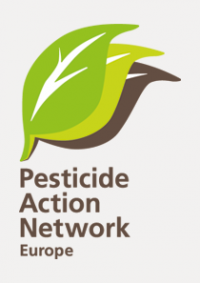Today’s ‘Water Resilience Strategy’ by the European Commission makes bold claims but offers little ambition in protecting water resources from one of its most persistent threats: pesticide pollution. Rather than tackling pollution at its source, it leans heavily on downstream "clean-up" technologies that still need to be developed. Even more concerning is the lack of support for existing legislation aiming to transition Europe towards a farming model that does not rely on pesticides. PFAS pesticides and their highly persistent and harmful breakdown product, TFA, are entirely overlooked, despite growing scientific concerns about their resulting widespread pollution.
“This is a missed opportunity for the EU to address one of the main pressing threats to water and biodiversity, and to truly shift away from a destructive and pesticide-dependent agricultural model that continues to pollute our waters and ecosystems,” says Manon Rouby, Policy Officer at PAN Europe.
Weak Commitments on Agriculture and Pesticides
The strategy sets limited actions for agriculture, pesticides and PFAS:
- By 2030, the CAP Strategic Plans will support practices to improve soil health on 47% of the EU’s farmland, but only support sustainable use of pesticides on 27% and improved nutrient management on 15%
- Between 2025-2026, the CAP Strategic Plans to incentivise farmers to improve the environmental performance of their crops and support improved and independent farm advisory services - however, without specifying the reduction in pesticide use
- Between 2026-2027, to launch a public-private initiative to develop remediation technologies for PFAS and other persistent chemicals (if the right partners are found)- an approach that avoids tackling pollution at source
- No mention is made of PFAS pesticides or TFA contamination, despite their resulting widespread pollution of water resources.
“Since 2014, the EU law has required farmers to apply the least harmful practices and use pesticides only as a very last resort - a goal that remains to be achieved. Instead of supporting this process, the strategy undermines it by proposing the status quo: supporting “sustainable” pesticide use on just 27% of farmland, without setting clear result-based measures to effectively reduce harmful pesticides,” says Kristine De Schamphelaere, policy officer for Agriculture at PAN Europe.
The strategy continues to lack concrete policy measures to address water pollution at its source. There are no binding measures to reduce pesticide pollution or phase out the use of PFAS. Instead, the focus is on costly remediation, often funded by public money, and while it references the polluter pays principle, no concrete specific application of the principle is proposed.
“Water pollution is spreading throughout the EU, affecting ecosystems and endangering human health more than ever before. Yet this strategy fails to deliver the urgent measures we need. We’re afraid there won’t be any meaningful improvement in the protection of Europe’s water,” says Manon Rouby, Policy and Legal Officer at PAN Europe.
Read more:
- PAN Europe’s feedback to the call for evidence on Water Resilience Strategy
- PAN Europe’s reaction to the adoption of the European Parliament resolution on Water Resilience, 7 May 2025
- PAN Europe’s reaction to the leaked draft strategy, 16 May 2025
- PAN Europe’s work on banning PFAS pesticides and TFA
- Statement of support from over 450 scientists calling on the EU to swiftly update its water pollution standards
- The CAP 2023-27 ambitions
Contact:
- Manon Rouby, Policy Officer & Legal Adviser, manon [at] pan-europe.info, +336 43 24 33 79
- Dr Angeliki Lysimachou, Head of Science and Policy, angeliki [at] pan-europe.info, +32 496 39 29 30
- Tjerk Dalhuisen, Communications Officer, tjerk [at] pan-europe.info, +31 6 146 991 26
